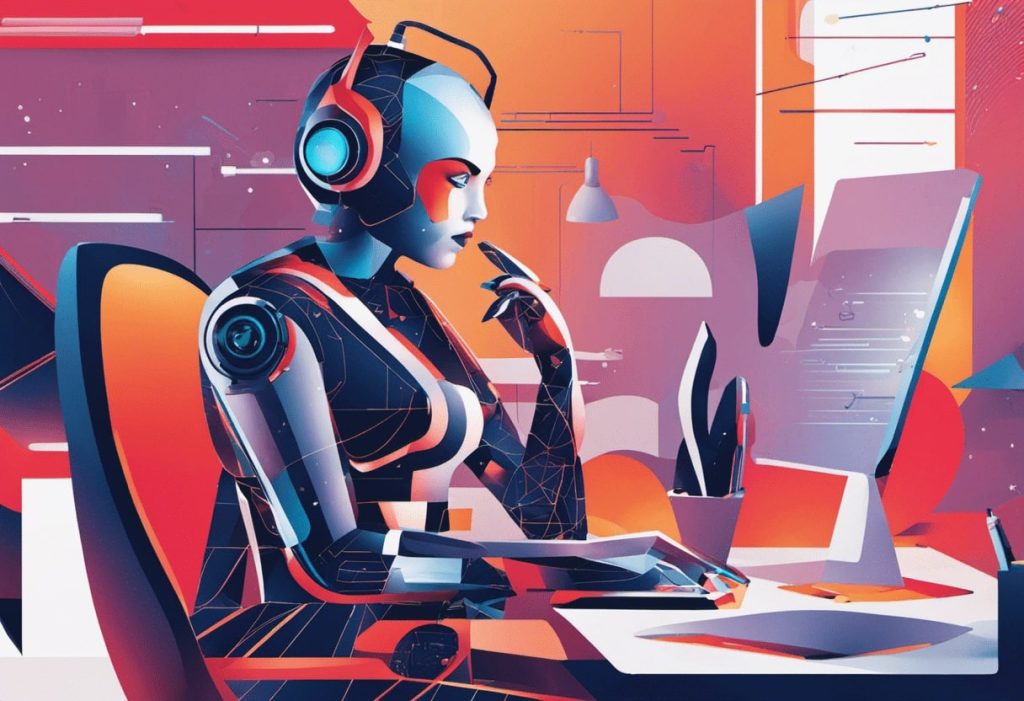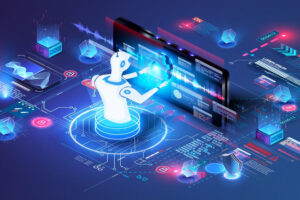In the ever-evolving realm of video gaming, AI in video game graphics has emerged as a transformative force, reshaping how games are designed, experienced, and appreciated. As technology advances, the integration of artificial intelligence into video game graphics is becoming increasingly sophisticated, creating more immersive and visually stunning experiences for players worldwide.

Understanding AI in Video Game Graphics
The application of AI in video game graphics involves utilizing machine learning algorithms to enhance the visual aspects of games. This includes improving textures, lighting, and rendering, thereby creating more realistic and dynamic environments. AI technology allows developers to push the boundaries of what is visually possible, creating games that are not only entertaining but also visually breathtaking.
The Role of AI in Game Development
AI technology is now a cornerstone in the game development process. From generating realistic characters to creating intricate landscapes, AI is used to automate and optimize various aspects of game design. This not only accelerates the development process but also allows for greater creativity and innovation in game design.
Enhancing Realism with AI
Realism is a key component of modern video games, and AI plays a crucial role in achieving this. Through advanced algorithms, AI can simulate real-world physics and behaviors, bringing virtual worlds to life. Games like ‘The Last of Us Part II’ have showcased how AI-driven graphics can create incredibly lifelike animations and environments.
AI-Driven Character Development
Creating believable characters is essential for player immersion. AI aids in generating characters that can adapt and respond to player actions in real-time, providing a more personalized and engaging gaming experience. This dynamic interaction elevates the emotional connection players have with the game.
Procedural Content Generation
One of the most exciting applications of AI in video game graphics is procedural content generation. This involves using AI to create game content such as levels, maps, and quests on the fly. This not only ensures unique gameplay experiences but also significantly reduces development time.
Lighting and Rendering Advancements
Lighting and rendering are critical components of game graphics. AI algorithms are used to optimize these processes, ensuring that lighting is not only realistic but also dynamic. This results in more visually appealing and immersive environments.
The Future of AI in Game Graphics
The future of AI in video game graphics is bright, with endless possibilities for innovation. As AI technology continues to evolve, we can expect even more groundbreaking advancements in game visuals, leading to experiences that are more immersive and captivating than ever before.
Challenges and Considerations
Despite its potential, integrating AI into video game graphics poses certain challenges. These include ethical considerations, such as ensuring that AI-generated content is culturally sensitive and free from bias. Developers must also consider the balance between AI-driven automation and human creativity.
AI for Artistic Expression
AI is not just a tool for enhancing realism; it is also a medium for artistic expression. Developers can use AI to experiment with unique art styles and visual effects, creating games that stand out for their artistic innovation. For more insights, check out how AI for Artistic Expression is being utilized.
AI and Player Experience
The integration of AI in video game graphics enhances the overall player experience by offering more interactive and dynamic environments. Players can enjoy more personalized and responsive gameplay, leading to greater engagement and satisfaction.
AI in Indie Game Development
AI technology is not limited to major game studios; indie developers are also leveraging AI to create visually stunning games on a smaller scale. This democratization of technology allows for more diversity and creativity within the gaming industry.
AI and Virtual Reality
Virtual reality (VR) games are another area where AI-driven graphics are making a significant impact. AI enhances the realism and interactivity of VR environments, providing players with immersive experiences that blur the line between reality and the virtual world.
AI’s Impact on Game Design
The use of AI in video game graphics is influencing game design by allowing developers to create more complex and detailed worlds. This has led to a shift in how games are conceptualized and designed, with a greater emphasis on creating visually rich and engaging experiences.
AI in Graphic Design
Beyond gaming, AI’s impact on graphic design is also noteworthy. For a deeper understanding of AI’s role in graphic design, explore this insightful article on AI in Graphic Design.
Conclusion
In conclusion, the integration of AI in video game graphics is revolutionizing the gaming industry. By enhancing realism, facilitating procedural content generation, and enabling artistic expression, AI is creating a new era of gaming that is more immersive, engaging, and visually stunning than ever before.

FAQs on AI in Video Game Graphics
What is the role of AI in video game graphics?
AI plays a crucial role in enhancing the visual aspects of video games by improving textures, lighting, and rendering, resulting in more realistic and immersive environments.
How does AI enhance player experience in video games?
AI enhances player experience by providing more interactive and dynamic environments, offering personalized and responsive gameplay, leading to greater engagement and satisfaction.
What are the challenges of integrating AI into video game graphics?
Challenges include ethical considerations, such as ensuring AI-generated content is free from bias, and balancing AI-driven automation with human creativity.







